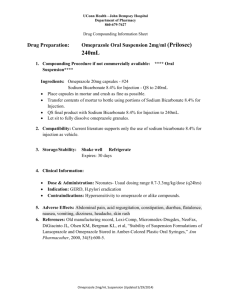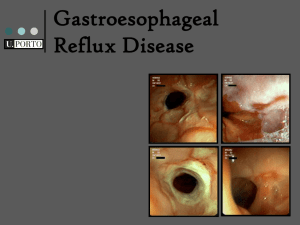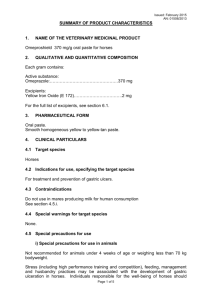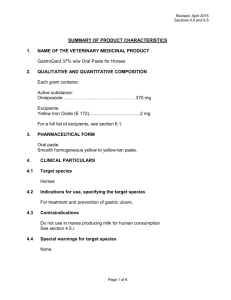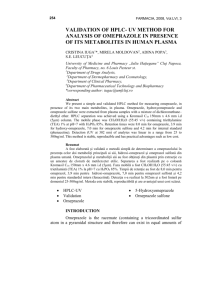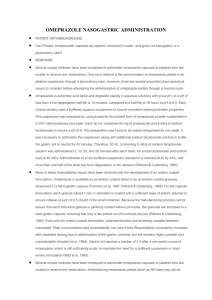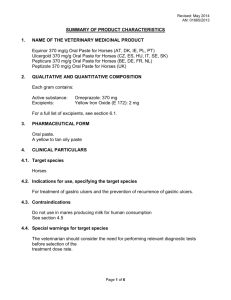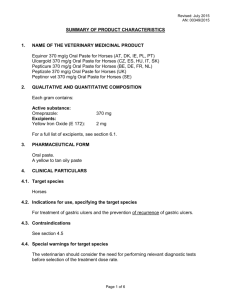PROJECT TITLE
advertisement
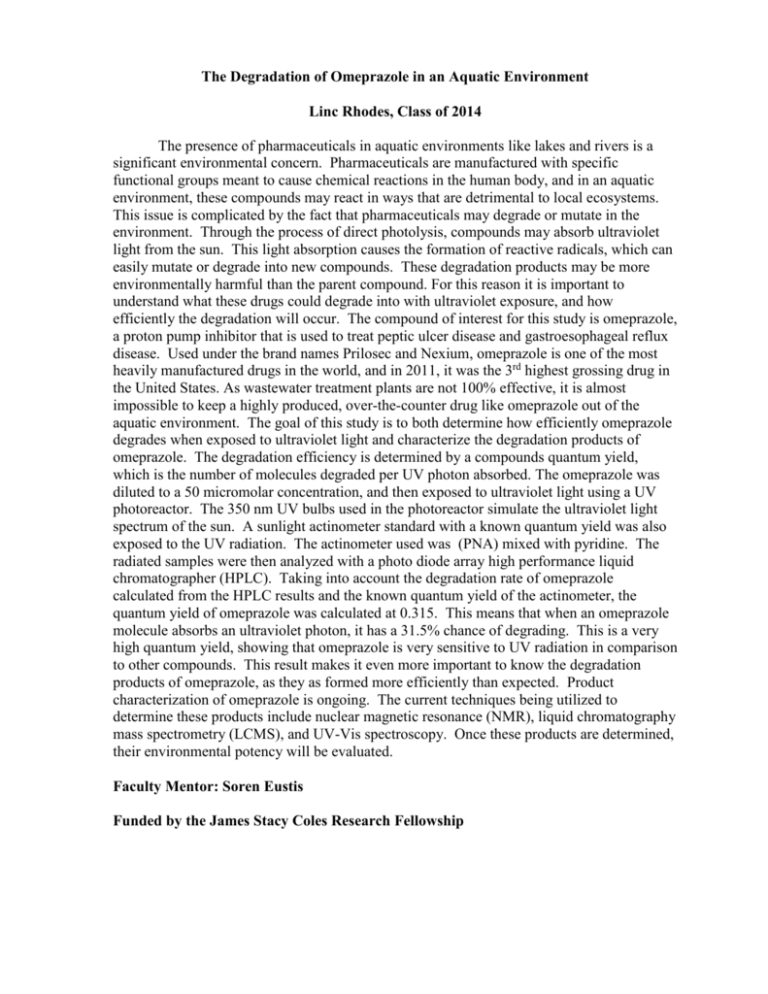
The Degradation of Omeprazole in an Aquatic Environment Linc Rhodes, Class of 2014 The presence of pharmaceuticals in aquatic environments like lakes and rivers is a significant environmental concern. Pharmaceuticals are manufactured with specific functional groups meant to cause chemical reactions in the human body, and in an aquatic environment, these compounds may react in ways that are detrimental to local ecosystems. This issue is complicated by the fact that pharmaceuticals may degrade or mutate in the environment. Through the process of direct photolysis, compounds may absorb ultraviolet light from the sun. This light absorption causes the formation of reactive radicals, which can easily mutate or degrade into new compounds. These degradation products may be more environmentally harmful than the parent compound. For this reason it is important to understand what these drugs could degrade into with ultraviolet exposure, and how efficiently the degradation will occur. The compound of interest for this study is omeprazole, a proton pump inhibitor that is used to treat peptic ulcer disease and gastroesophageal reflux disease. Used under the brand names Prilosec and Nexium, omeprazole is one of the most heavily manufactured drugs in the world, and in 2011, it was the 3rd highest grossing drug in the United States. As wastewater treatment plants are not 100% effective, it is almost impossible to keep a highly produced, over-the-counter drug like omeprazole out of the aquatic environment. The goal of this study is to both determine how efficiently omeprazole degrades when exposed to ultraviolet light and characterize the degradation products of omeprazole. The degradation efficiency is determined by a compounds quantum yield, which is the number of molecules degraded per UV photon absorbed. The omeprazole was diluted to a 50 micromolar concentration, and then exposed to ultraviolet light using a UV photoreactor. The 350 nm UV bulbs used in the photoreactor simulate the ultraviolet light spectrum of the sun. A sunlight actinometer standard with a known quantum yield was also exposed to the UV radiation. The actinometer used was (PNA) mixed with pyridine. The radiated samples were then analyzed with a photo diode array high performance liquid chromatographer (HPLC). Taking into account the degradation rate of omeprazole calculated from the HPLC results and the known quantum yield of the actinometer, the quantum yield of omeprazole was calculated at 0.315. This means that when an omeprazole molecule absorbs an ultraviolet photon, it has a 31.5% chance of degrading. This is a very high quantum yield, showing that omeprazole is very sensitive to UV radiation in comparison to other compounds. This result makes it even more important to know the degradation products of omeprazole, as they as formed more efficiently than expected. Product characterization of omeprazole is ongoing. The current techniques being utilized to determine these products include nuclear magnetic resonance (NMR), liquid chromatography mass spectrometry (LCMS), and UV-Vis spectroscopy. Once these products are determined, their environmental potency will be evaluated. Faculty Mentor: Soren Eustis Funded by the James Stacy Coles Research Fellowship
